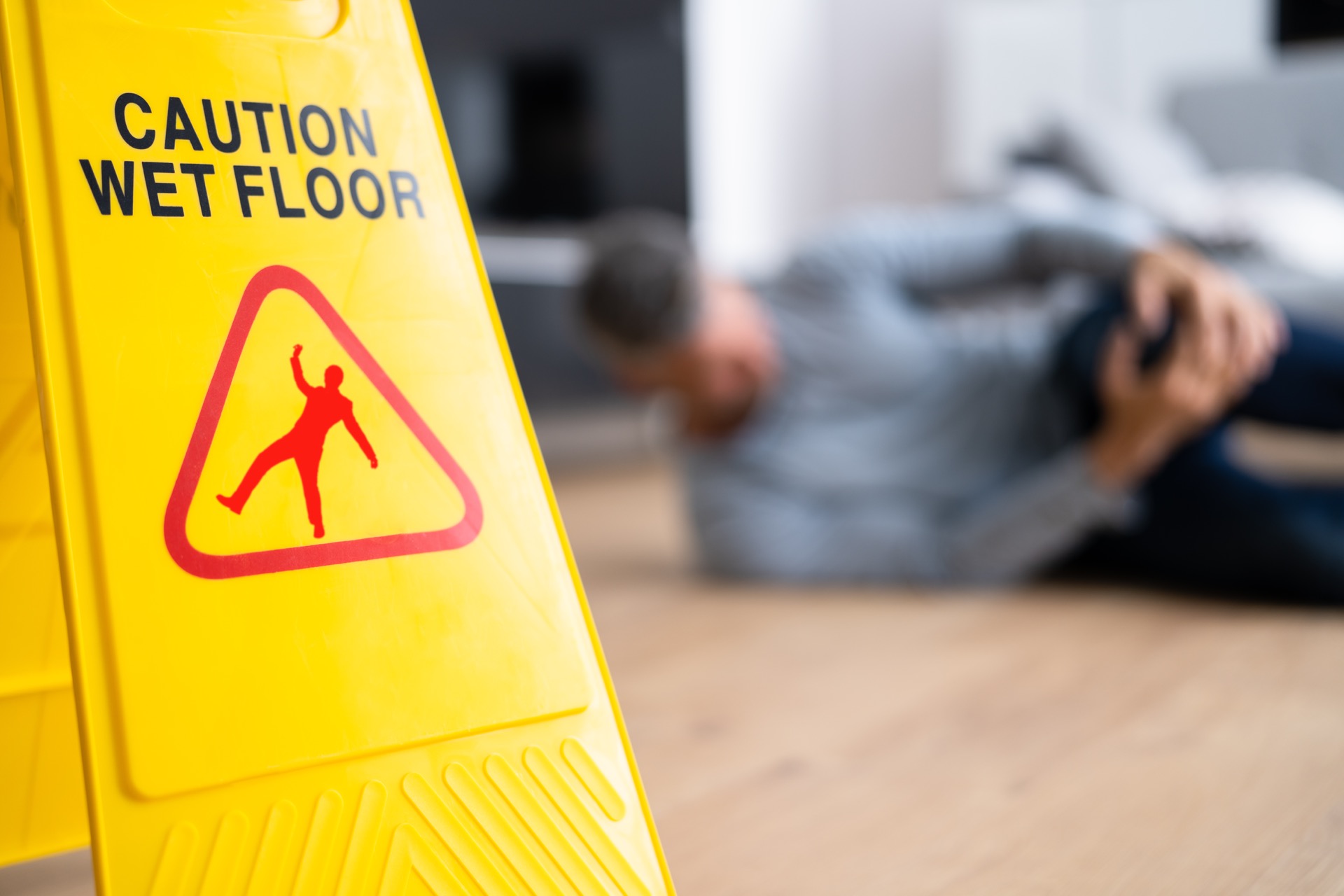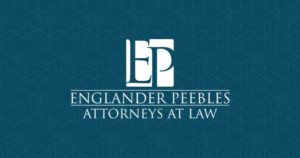Slip and fall accidents frequently result in moderate to catastrophic injuries that can have a long-term or permanent impact on your daily life and future prognosis. If you suffered injuries due to someone else’s negligence, you may be entitled to recover compensation for your losses. However, you must take specific measures to hold property owners and other at-fault parties accountable when failing to maintain safe premises, starting with speaking to a reputable attorney.
Schedule a free consultation with an experienced premises liability lawyer about when you can make a claim for a slip and fall injury. After discovering the details of your case, they can best advise you on how to proceed in securing a settlement.

When Can I Make a Claim for a Slip and Fall Injury?
Knowing when you can make a claim for a slip and fall injury involves individual state statutes and other local regulations. State statutes range from one to six years for filing premises liability claims. In Florida, you have two years from the date of the slip and fall to file an injury claim or lawsuit. While that may sound like ample time, it moves quickly. The sooner you speak to an attorney, the better. You’ll want to get the ball rolling early to ensure full recovery time and compensation.
Understanding Premises Liability in Slip and Fall Accidents
There are various types of premises liability, primarily strict liability, attractive nuisance, and negligence. The latter is the most common form and pertinent when you need to make a claim for a slip and fall injury. Negligence occurs when a property owner or occupier fails to maintain safe conditions on their premises or warn visitors of potential hazards—making them liable. Slip and fall injury victims can pursue legal action to hold at-fault parties responsible for their negligence, injuries, and actual damages, including medical bills, lost income, and pain and suffering.
Most premises liability cases begin when an accident victim makes a claim for a slip and fall injury for their actual damages. An attorney ensures proper form completion and filing and then handles communications and negotiations with insurance companies while injured parties focus on recovery. However, when insurance companies refuse to pay valid claims, lawyers can file civil lawsuits to recover compensation for damages.
Who Is Liable When I Make a Claim for a Slip and Fall Injury?
Property owners, including homeowners, landlords, and store owners, are generally liable for slip and fall accidents and subsequent injuries and damages. They have a legal duty of care to ensure reasonably safe conditions on the premises for visitors, and failure to do so makes them liable. Other potentially at-fault parties who can be held accountable when responsible for hazardous conditions include:
- Property managers, such as for apartment complexes
- Business owners or commercial tenants
- Residential tenants
- Maintenance and cleaning companies
- Flooring material manufacturers
- Contractors and subcontractors
Factors including the property type—public, commercial, or private—and the type of visitor—invitee, licensee, or trespasser—can make liability complex. Insurance companies often complicate the process, aiming to minimize payouts by delaying, devaluing, and denying slip and fall claims. Retaining legal representation for claim navigation benefits injury victims who need to prioritize medical treatments, rehabilitation, and recovery.
Hazardous Conditions That Cause Slip and Fall Injuries
Slip and fall accidents account for over one million emergency room (ER) visits annually in the U.S. They are the leading cause of missing work and the primary cause of fatal occupational injuries. Slip and fall accidents can happen at any given time and any place. They commonly occur in retail and grocery stores, parking lots and garages, bars and restaurants, hospitals and nursing homes, workplaces, and private residences. Hazardous conditions that contribute to negligent slip and fall accidents and injuries are as follows:
- Recently mopped and waxed floors
- Spills and water leaks
- Insufficient lighting
- Loose floorboards or carpeting
- Cracked or crumbling sidewalks
- Large potholes and cracks in the concrete
- Cluttered walkways and workspaces
- Loose cords and wires
- Missing or broken handrails
- Uneven surfaces and steps
- Broken staircases
- Unsecured objects
- Elevators and escalators
- Icy and snowy weather conditions
- Unleashed dogs and other pets or animals
A lack of warning for hazardous conditions, such as wet floors or icy conditions, is another unsafe condition that causes numerous slip and fall injuries. Property owners and occupiers have a reasonable duty of care to adequately warn with signs, barriers, and other planned methods to ensure visitors are safe on their premises. Failure to warn is a viable reason to make a claim for a slip and fall injury.
Compensation for a Slip and Fall Injury
Determining the value of a slip and fall injury involves various considerations, including the severity and prognosis of the injury, its impact on one’s ability to perform daily tasks and work-related duties, and potential long-term care needs. Slip and fall lawyers assess the actual damages in your cases, calculating economic damages and determining the value for non-economic damages.
Economic Damages
Economic or special damages are the financial losses incurred from the slip and fall. You can prove these losses with receipts verifying their expenses. Other viable evidence includes bills, banking statements, invoices, estimates, pay stubs, and employer lost-wage statements. Standard examples of economic damages are as follows:
- Healthcare Costs: Your healthcare costs are recoverable after a slip and fall accident. These include ambulance transport, emergency care, surgeries, hospitalizations, rehabilitation services, and medical treatments. Other typical expenses include medical assistive devices, prescription medications, copays, and deductibles.
- Long-Term Healthcare: When injuries require ongoing, future, or long-term medical care, they are assessed and calculated. These account for future surgeries, rehabilitation, and nursing home facility care.
- Lost Income: Income losses are fully recoverable economic damages. These typically involve lost earnings, including overtime and bonuses. Commissions and tips may also be factored in for employees who depend on non-salary compensation. Other lost income includes healthcare benefits, retirement or pension plans, and trajected promotions.
- Property Damages: When personal property is damaged, you can include it when making a claim for a slip and fall injury. These encompass cell phones, designer bags, clothing, smart watches, jewelry, and other valuables.
Depending on the circumstances of a slip and fall and injuries, other losses can include transportation costs and time maintaining medical appointments, home modifications for disabilities, and household services, such as cleaning, cooking, childcare, and assistance with basic care needs. All monetary losses that you can prove can be calculated. Injured parties should provide all documentation to their attorneys to ensure correct calculations.
Non-Economic Damages
Non-economic or general damages are more challenging to quantify because they lack a paper trail of evidence supporting their validity. Instead, detailed medical records, expert witness testimony, and pain journals demonstrate these losses. Standard examples of non-economic damages for a slip and fall include the following:
- Pain and Suffering: Your pain and suffering are intangible losses referring to physical aches and pains, emotional distress, and the psychological impact of the accident and injuries. These can entail generalized anxiety, depression, and post-traumatic stress disorder (PTSD).
- Decreased Quality of Life: Another intangible loss that can be considered is the diminished ability to experience and participate in hobbies, sports, social events, and other activities you enjoyed before being injured. It compensates for the loss of enjoyment in life, loneliness, and damage to overall happiness and wellness.
- Loss of Consortium: Slip and fall injury victims, spouses, domestic partners, children, and parents can file for a loss of consortium. This damage compensates for losing relationship benefits, such as companionship, love, affection, physical relations, parental guidance, and support.
Other circumstances involve pursuing compensation for various intangible losses. For example, attorneys may secure compensation for lost years when injuries shorten life expectancies. They can also assess damages for disfigurement, scarring, and disability. Accident victims must keep detailed pain journals that consistently highlight their intangible damages. Entries should document chronic pain, mental anguish, inabilities or limited abilities to do things you could before, and symptoms of psychological issues, such as panic attacks associated with anxiety disorders.
Wrongful Death Benefits
When a slip and fall injury results in the death of a loved one, the surviving family may be eligible to file a wrongful death claim. These pursue benefits for the decedent’s final medical bills, income losses, and other costs associated with their injuries. Families can recover the costs of funeral and burial services. Surviving spouses, children, or parents (pending circumstances) can pursue a loss of consortium. Other wrongful death benefits that can be factored in are the loss of financial support and parental guidance.
Why Do I Need an Experienced Slip and Fall Attorney?

Navigating premises liability cases can be challenging and involves many steps, from filing to settling. Insurance companies frequently resort to tactics to undervalue and deny valid claims, further complicating the path to compensation. Injury victims significantly benefit from having an experienced slip and fall lawyer manage their cases while they focus on medical treatments and recovery.
Free Consultations
Premises liability or slip and fall lawyers provide free consultations to injured parties seeking compensation for injuries and damages. They understand the
financial and emotional difficulties that arise following a slip and fall and strive to alleviate further burdening their clients. During the initial meeting, attorneys will gather relevant information as you share your story to begin building a strategy for your case. Free consultations provide ample opportunity to ask questions and receive free legal advice on case proceedings. You’re not required to hire an attorney after your consultation.
Contingency Fee Arrangements
Slip and fall attorneys (most) work on a contingency fee basis, meaning their fees are contingent on winning your case. You owe them nothing for their services if they don’t secure a settlement for your damages. Contingency fee arrangements allow slip and fall injury victims to retain legal counsel without any out-of-pocket costs.
Comprehensive Case Investigation
A premises liability lawyer comprehensively investigates the incident by promptly gathering evidence demonstrating negligence and liability. The strength of your evidence significantly impacts proof and compensation amounts. Depending on the circumstances of your slip and fall injury, attorneys collect and analyze evidence, such as:
- An accident, incident, or police report
- Photos of the hazardous condition and accident scene
- Pictures of your injuries following the slip and fall
- Detailed medical records and bills
- Video surveillance capturing the slip and fall accident (when applicable)
- Maintenance logs
- Property or business records
- Weather reports
Witness statements corroborating your accounting of the slip and fall injury are also critical evidence when obtainable. Attorneys commonly collaborate with expert witnesses to strengthen the evidence in a slip and fall claim and gather invaluable testimony. Healthcare professionals review medical records, identifying potential concerns and ensuring adequate documentation. Economists and vocational experts help value specific damages.
Insurance Company Negotiations
Insurance claims adjusters do not prioritize the claimant’s interests. Instead, they look for ways to minimize and deny claims to save their company’s money. An experienced slip and fall lawyer is a skilled negotiator who won’t back down from demanding what’s fair. They know how much your claim is worth and will fight for every penny.
Negotiations can take several rounds before all parties agree on the settlement terms. Lawyers should discuss all offers with clients before accepting or rejecting them. They are there to advise, but the ultimate decision on whether to accept or reject is yours.
Court Representation
When negotiations fail, lawyers can file civil lawsuits to pursue damages for your slip and fall injury claim. The process involves discovery, pre-trial motions, and further negotiations before presenting evidence before a judge and jury. However, most premises liability cases do not go to trial. Only about one in twenty injury claims require litigation and are resolved in court by a judge and jury.
Speak to an Experienced Slip and Fall Attorney Now

After learning the specifics of your case, an experienced attorney can answer when to make a claim for a slip and fall injury. Because most work on a contingency fee basis, they won’t accept cases in which they aren’t confident about winning. That means you can trust them to be honest about your chances of securing a settlement without wasting your time or money. Schedule a free consultation to determine your path to recovering compensation.


